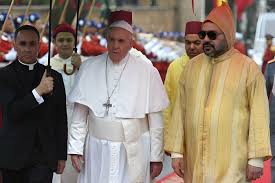Are Pastor Robes a Reflection of Authority?

In various Christian denominations, the role of pastors is crucial in leading congregations, performing sacraments, and providing spiritual guidance. The attire worn by pastors, often known as pastor robes, carries significant symbolism and conveys messages about authority, tradition, and respect. This article explores whether pastor robes reflect authority, examining their historical context, theological implications, cultural influences, and modern perspectives.
Historical Background of Pastor Robes
The tradition of clergy attire dates back to the early Christian church. Initially, pastors and other clergy wore simple, everyday clothing. However, as the church became more institutionalized, distinct pastoral garments were adopted to signify the spiritual authority and responsibilities of the clergy. These garments evolved from the formal wear of the Roman Empire, adapted to reflect Christian values and traditions.
By the Middle Ages, specific pastor robes such as the cassock, surplice, and stole became standardized in many Christian denominations. These garments not only distinguished the clergy from the laity but also symbolized the sanctity and authority of their roles. Over time, the attire of pastors continued to evolve, influenced by theological, cultural, and social factors.
Theological Significance of Pastor Robes
Pastor robes carry profound theological significance. They are not merely garments but are imbued with symbolic meanings that reflect the spiritual authority and responsibilities of the pastor. For instance, the alb, a long white robe, symbolizes purity and righteousness, while the stole, draped over the shoulders, represents the yoke of Christ and the burden of pastoral duties.
The wearing of pastoral garments during services and sacraments serves as a visual reminder of the pastor’s role as a mediator between God and the congregation. This attire emphasizes the sacred nature of the pastor’s duties, reinforcing their authority to lead worship, administer sacraments, and provide spiritual guidance.
Cultural Influences on Pastor Robes
Cultural influences have played a significant role in the evolution of pastor robes. Throughout history, these garments have been adapted to reflect the cultural contexts in which the church operates. In different regions, pastoral garments have incorporated local fabrics, designs, and styles, making them more relatable and meaningful to the congregations they serve.
For example, in African churches, pastors might wear robes made from traditional African fabrics, blending local cultural elements with Christian symbolism. Similarly, in Asian and Latin American contexts, pastor robes might reflect indigenous styles and patterns. This cultural adaptability has helped to maintain the relevance and resonance of pastoral garments across diverse congregations.
Modern Perspectives on Pastor Robes
In contemporary times, the relevance and appropriateness of pastor robes are often debated. Some argue that these garments are outdated and should be discarded in favor of more modern and casual attire. Others contend that pastoral garments are essential for maintaining the dignity and solemnity of religious services and for symbolizing the pastor’s authority.
Proponents of traditional pastor robes argue that these garments provide a sense of continuity and stability, connecting modern worship with historical traditions. They believe that the visual symbolism of pastoral garments enhances the worship experience and reinforces the pastor’s role as a spiritual leader. Critics, however, argue that the church should adapt to contemporary culture by embracing more casual and relatable attire for pastors.
Practical Considerations
Practical considerations also influence the use of pastor robes. Traditional pastoral garments can be expensive and may require special care, raising questions about their practicality in everyday ministry. Moreover, the comfort and functionality of these garments are important factors for pastors who perform a wide range of duties, from leading worship to pastoral care and community outreach.
Modern fabrics and designs have been developed to enhance the comfort and practicality of pastor robes. These innovations ensure that pastors can perform their duties effectively without being hindered by their attire. Additionally, the design of pastoral garments now often includes features such as adjustable fittings and breathable materials to improve comfort and functionality.
Gender and Inclusivity
As more women enter pastoral roles, the design and availability of pastor robes have also evolved. Traditional pastoral garments were primarily designed for men, but there is now a growing recognition of the need for robes that accommodate women comfortably. This shift reflects changes in church leadership and signifies a broader commitment to gender inclusivity within the church.
Inclusive pastoral garments are tailored to fit all body types and consider the diverse needs of clergy. This inclusivity is crucial for fostering a sense of belonging and respect among all members of the clergy, regardless of gender. By ensuring that pastor robes are accessible and suitable for everyone, the church demonstrates its commitment to equality and inclusivity.
Symbolism and Authority
Pastor robes are powerful symbols of authority within the church. They communicate the role and responsibilities of the pastor to the congregation and the wider community. For many believers, these garments are a visual affirmation of the pastor’s dedication to their spiritual vocation and their authority to lead and guide the congregation.
The symbolism of pastoral garments extends beyond individual identity. It also reflects the collective identity of the church. Traditional vestments serve as a reminder of the church’s history, its theological foundations, and its mission. They connect the present-day church with its historical roots and reinforce the continuity of its teachings and practices.
Enhancing the Worship Experience
The presence of pastor robes can significantly enhance the worship experience for the congregation. These garments contribute to the solemnity and reverence of religious services, helping to create an atmosphere conducive to worship and reflection. For many congregants, the sight of a pastor in full vestments evokes a sense of awe and reverence, deepening their spiritual experience.
Pastoral garments also play a role in the visual and aesthetic aspects of worship. The use of liturgical colors and specific garments for different seasons and feasts adds a dynamic and engaging element to the worship experience. This visual symbolism helps to convey the themes and messages of the liturgical calendar, enriching the congregation’s understanding and participation in the church’s rituals.
The Future of Pastor Robes
The future of pastor robes will likely be shaped by ongoing discussions about tradition, modernity, and inclusivity. As the church continues to adapt to changing cultural and social contexts, the design and use of pastoral garments will evolve to reflect these changes. However, the fundamental principles that underpin the use of pastor robes—symbolism, identity, and reverence—are likely to remain constant.
One potential future trend is the increasing use of sustainable and ethically sourced materials for pastor robes. As awareness of environmental and social issues grows, many churches are seeking to align their practices with these values. This shift towards sustainability reflects a broader commitment to stewardship and ethical responsibility.
Technological advancements may also influence the future of pastor robes. Digital design tools and advanced manufacturing techniques could allow for greater customization and personalization of vestments. This would enable pastors to choose attire that reflects their personal style and the unique character of their congregations while maintaining the traditional elements of their garments.
Conclusion
In conclusion,pastor robes
are indeed a reflection of authority within the church. They carry deep historical and theological significance, symbolizing the sanctity and responsibilities of the pastoral role.
Pastoral garments
have evolved over centuries, influenced by cultural contexts and practical considerations, yet they continue to play a vital role in the life of the church.
As the church navigates the challenges and opportunities of the modern world, the design and use of
pastor robes
will continue to evolve. However, their fundamental purpose—to enhance the worship experience, symbolize spiritual dedication, and connect the present with the past—will endure. By balancing tradition and modernity, inclusivity and practicality,
pastoral garments
will remain a meaningful and integral aspect of Christian worship for generations to come.



